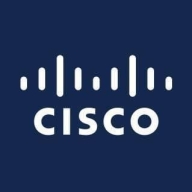

Cisco Duo and Cisco ISE are both security-focused products from Cisco. Cisco Duo appears to have the upper hand in user satisfaction due to its ease of use and cost-effectiveness, whereas Cisco ISE is preferred for its advanced security features.
Features: Users value Cisco Duo for its multi-factor authentication, seamless integration, and simplicity. Cisco ISE is noted for its robust network access control, extensive visibility, and comprehensive compliance reporting capabilities.
Room for Improvement: Cisco Duo needs better reporting capabilities, a simpler administrative interface, and enhanced usability. Cisco ISE could improve with a more intuitive configuration process, faster customer support response times, and less setup complexity.
Ease of Deployment and Customer Service: Cisco Duo is known for a quick and smooth deployment process with excellent customer service. Cisco ISE's deployment is more complex and time-consuming, with mixed reviews on customer service effectiveness and responsiveness.
Pricing and ROI: Cisco Duo is considered cost-effective with low setup costs and satisfactory ROI. Cisco ISE involves higher setup costs but offers strong ROI due to its extensive feature set and capabilities.
I think Cisco Duo offers a good return on investment for startups, newer organizations, or those utilizing cloud-based applications.
I have not seen ROI with Cisco Duo; probably the opposite, because it impedes productivity time to be able to get into the system.
From my point of view, the biggest return on investment when using Cisco Duo is the security and the ease of setting it up.
Direct comparisons with Forescout reveal up to 30% to 40% difference in cost savings.
They got back to us quickly, were nice, and gave us what we needed.
I would rate their support 10 out of 10.
Other support sections have failed miserably because of the lack of response time.
I rate the technical support as one out of ten.
Cisco support has pretty good teams for support and every time we had good answers and we could somehow solve the issues we had.
Sometimes it's challenging to identify which support team is responsible for certain issues, which is a significant concern.
I believe Cisco Duo is very scalable because it is cloud-based.
We started out with just the basics, getting a token, and then we changed to push, and now, we have added the offline mode.
It scales easily because it is just tied into our identity provider, and it grows along with that.
Factors like architecture, business nature, and legal limitations such as GDPR affect it.
However, you can have some latency issues depending on where your devices are.
When there is a bigger problem, we get notifications from Cisco Duo saying, 'Hey, we have a problem,' and that has helped us.
We have never experienced any downtime.
It is very reliable, easy to use, and I don't have too many issues with it.
Cisco Identity Services Engine (ISE) is considered very reliable and stable.
The stability of Cisco Identity Services Engine (ISE) is poor for certain use cases, like authentication.
Sometimes when we have upgrades or failovers with Cisco Identity Services Engine (ISE), we had some minor issues.
If you don't have internet access, you can't access your computer, only local access is available.
Cisco should allow easier integration with third-party equipment because Cisco's own equipment is expensive.
There needs to be consideration for how to launch Cisco Duo with a handheld device that is not native, where you can install the application.
The whole setup works well with Cisco access points and Cisco switches, but when you have multiple vendors in the environment, such as HP switches or access points like Aruba, you'll find they will not work well with Cisco Identity Services Engine (ISE).
Pricing can be more expensive compared to other vendors, and there is a significant price gap observed, which doesn't seem justified by some specific features.
They are very poor in asset classification and should focus on improving the preauthentication profiling, especially for NAC use cases.
The pricing is acceptable to them.
Their website lists $3 per month per user for the Essential license.
The approximate cost is around eighty dollars per user.
Compared to other solutions like HPE ClearPass, Cisco is more costly, and the conversation suggests a possible forty percent price gap compared to competitors.
The license costs can range between $50,000 to $100,000 per year for enterprises.
Cloud solutions are expensive, while on-prem setups with shared environments are cheaper but not effective.
From a management perspective, I appreciate that we can enroll or control devices on the back end for people who get a new phone and forget to handle Cisco Duo properly and need to add a new device.
Our company benefits from all those features of Cisco Duo with confidence, and we feel very secure with it in terms of authentication of our logins.
The benefit of having a complete passwordless environment in our organization is that it's gotten people away from using the sticky note under their keyboard - which is a huge problem.
Cisco Identity Services Engine (ISE) offers authentication using RADIUS, enhancing network security by separating and segregating networks.
There is value because it helps us secure the network and prevents certain things from happening which could cause financial loss.
The adaptability of Cisco Identity Services Engine (ISE) policy enforcement can fit to the site we have depending on which kind of devices we have on site and then the needs for authentication, granting access and then assigning each device into its correct network for segmentation.
| Product | Market Share (%) |
|---|---|
| Cisco Identity Services Engine (ISE) | 23.0% |
| Cisco Duo | 8.7% |
| Other | 68.3% |


| Company Size | Count |
|---|---|
| Small Business | 28 |
| Midsize Enterprise | 16 |
| Large Enterprise | 36 |
| Company Size | Count |
|---|---|
| Small Business | 44 |
| Midsize Enterprise | 31 |
| Large Enterprise | 91 |
Cisco Duo is a cloud-based identity security tool offering easy and wide-ranging access protection for users and devices worldwide. It assures identity-first security with clear visibility across multi-cloud, hybrid, and on-premises environments.
Cisco Duo provides robust multi-factor authentication and seamless integration capabilities with existing infrastructures. Appreciated for its stability and speed, it supports distributed workforces by securing VPN access, corporate networks, and cloud services. Duo’s comprehensive identity ecosystem supports easy deployment and management through a single-pane-of-glass management interface. It seamlessly merges with popular platforms like Active Directory and Office 365 across diverse hardware.
What are Cisco Duo’s Essential Features?
What Benefits and ROI Can Cisco Duo Users Expect?
Cisco Duo finds extensive applications across education, finance, retail, and government sectors by fortifying network and application access security. Organizations leverage it for its MFA capabilities, integrating with ERP systems, ensuring protected connectivity with VPN and cloud-based services, crucial in maintaining secure and efficient operations.
Cisco Identity Services Engine (ISE) offers comprehensive network access control and visibility, supporting features like 802.1X authentication, profiling, and posturing. It integrates with Microsoft and other Cisco products, facilitating robust security policies across distributed networks.
Cisco Identity Services Engine is a key player in network access control, offering centralized management and a user-friendly interface. It supports zero trust principles and provides strong authentication for wired and wireless networks. ISE's capabilities include granular security policies, enhanced device posturing, and seamless integration, bolstering security infrastructure. Users benefit from its dual authentication through EAP, simplifying access management across networks.
What are the key features of Cisco ISE?In industries like finance, healthcare, and education, Cisco ISE is pivotal for securing wired and wireless networks, implementing BYOD policies, and managing user access. Organizations leverage ISE for effective authentication and authorization, while maintaining compliance with industry security standards.
We monitor all Cisco Security Portfolio reviews to prevent fraudulent reviews and keep review quality high. We do not post reviews by company employees or direct competitors. We validate each review for authenticity via cross-reference with LinkedIn, and personal follow-up with the reviewer when necessary.